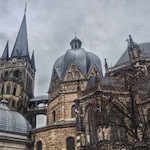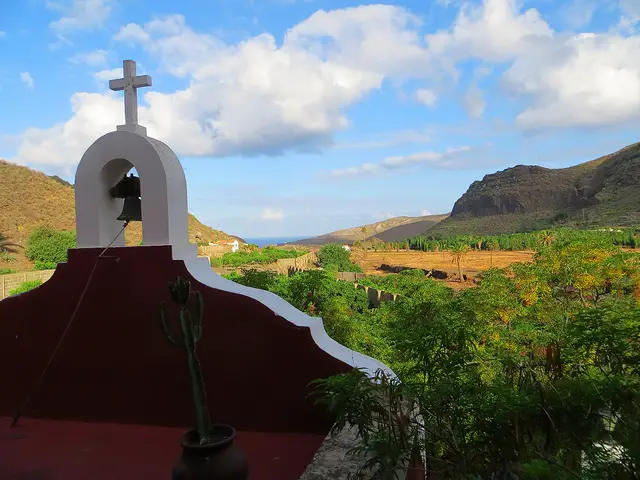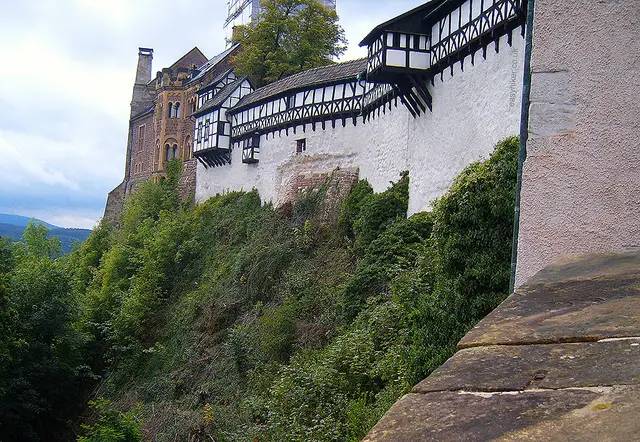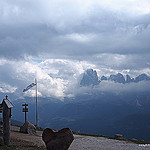Several posts ago, I said that there were no more bits of “undiscovered” or unknown Italy. Germany, however, present a different picture.
One might even say that Germany consists wholly of unknown regions – as far as the rest of the world is concerned, that is.
Inside Germany, this is a different matter: the Germans’ famous enthusiasm for travelling, after all, is not restricted to foreign countries. Every week-end, German hiking trails and historic towns are full of visitors.
Come to think of it, that is probably one reason why foreigners know so little about these treasures: international marketing is not only expensive and highly competitive but also unnecessary as long as the domestic market is booming.
Why spend a lot of money to attract visitors from Britain, the US and God-knows-where when hotels and restaurants are already bursting with domestic tourists?
Top of Germany’s most popular destinations are historic old towns that are embedded in some pieces of attractive countryside: preferably countryside that features a few hills, a body of water (a river or a lake) and a connection to some famous event or artist from German history.
Wetzlar (in Hessen) ticks all of these boxes …
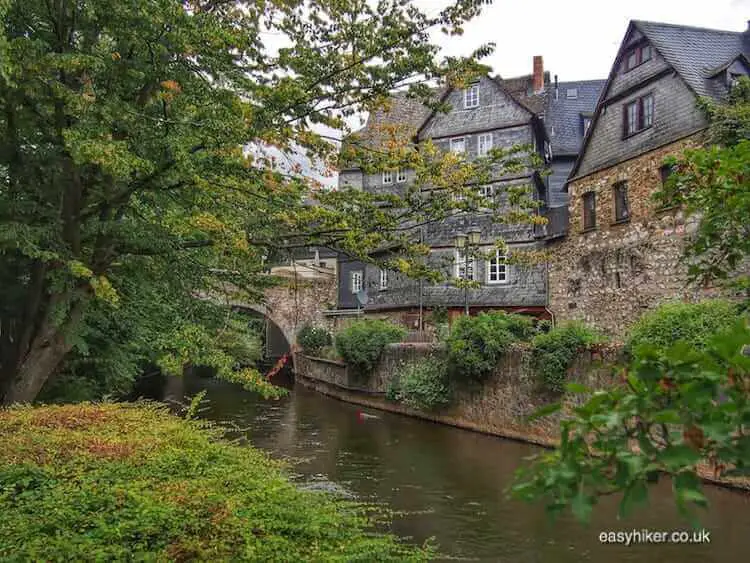
… and a lot of hiking is going on in the near-by Taunus mountain range and along the Lahn river.
Easy Hike Along the Goethe Trail
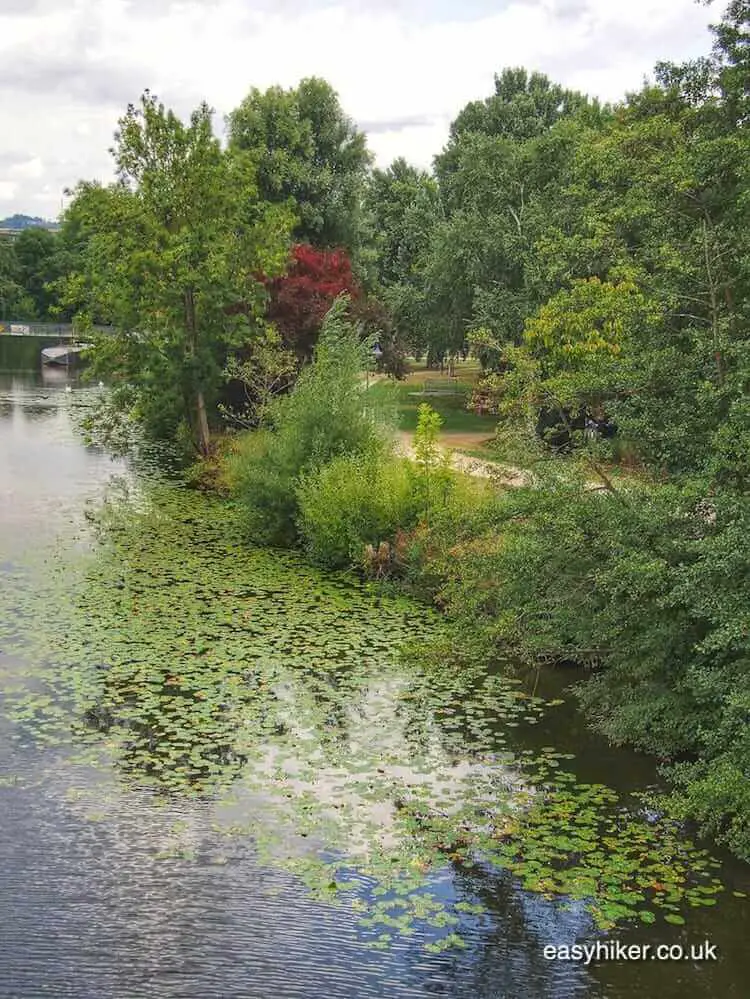
Today, however, we will be taking you for a easy hike along the Goethe Trail, a foot path alongside which Germany’s “national writer” found the material for his first big international success, the Romantic age’s equivalent to the Harry Potter saga or Dan Brown’s Da Vinci Code.
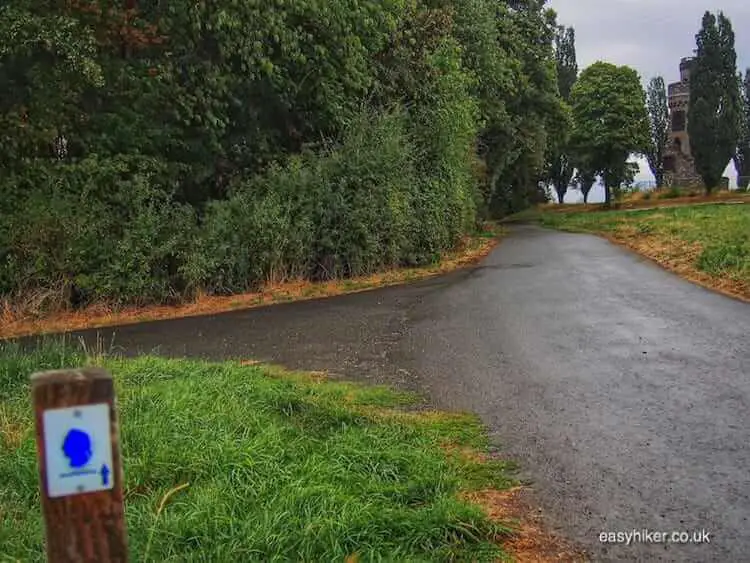
Having said that, no modern bestseller could ever match the impact that The Sorrows of Young Werther had in the late 18th century.
This is a feverishly romantic story of a young man who kills himself out of unrequited love was adored and hated in equal measure. The book was indexed by the Lutheran Church and banned across much of Germany (including the entire Habsburg Empire).
But enthusiastic young readers all over Europe imitated the Werther look (blue coat over a yellow vest, round felt hat, brown boots) and bought tea cups or cookie jars with motives from their favourite novel.
One particularly avid fan was a young French officer named Napoleon Bonaparte: he later confessed that he had read the book 7 times in full and always, even later in life, carried a copy with him.
Goethe had come to Wetzlar from his home town of Frankfurt (which lies approx. 70 km to the south) to follow in the family tradition and train as a lawyer but soon lost interest.
The people that he met and the things that he saw in the local countryside, meanwhile, were to provide him with the inspiration and the motives for his first novel – the book that would soon make him the most famous writer of his time.
The Goetheweg starts in the town centre of Wetzlar: it is here where we find the house in which the writer lived (Kornmarkt 7) …
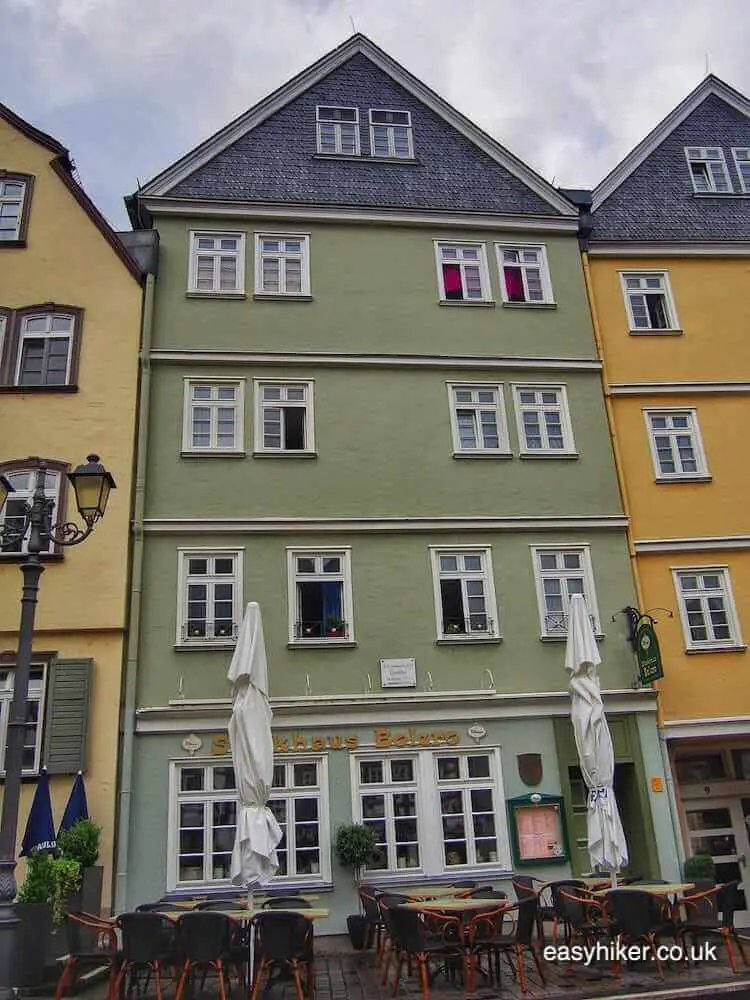
… the house (Lottestrasse 8) where he met – and fell in love with – the beautiful Charlotte Buff who was, however, already engaged to someone else …
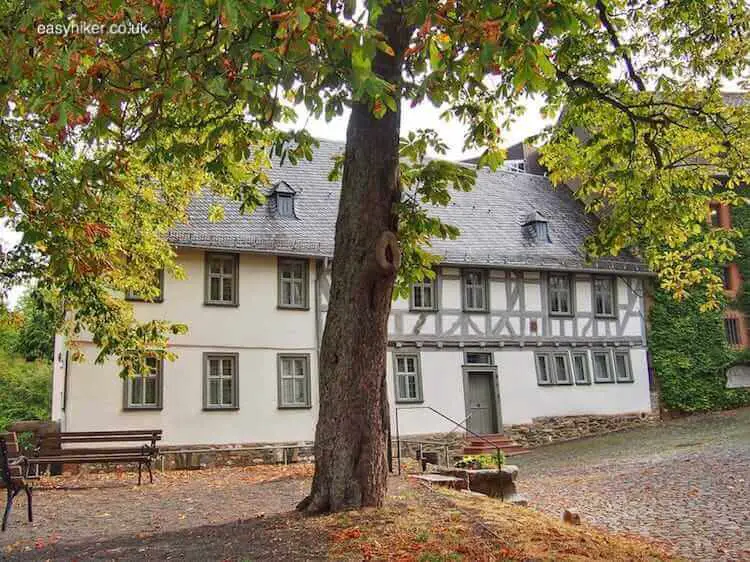
… and the quarters of the unfortunate K. W. Jerusalem (Schillerplatz 5) who was employed as a junior official at the court where Goethe himself was a trainee.
Jerusalem had fallen in love with a married woman – not Charlotte! – and killed himself when he realized that she would remain forever out of reach.
It was when Goethe – already back in Frankfurt – read his death notice in a local newspaper that he combined his own and his friend’s experiences to weave together the basic plot of the novel.
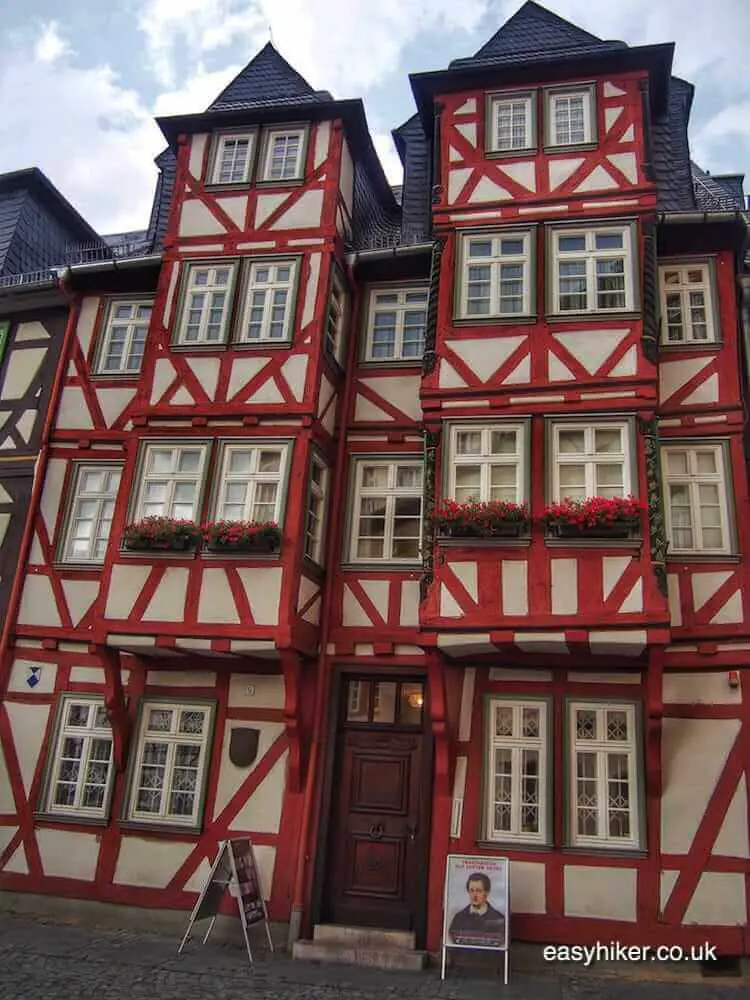
After your visit of the old town, turn from Domplatz – the Cathedral Square – into Goethestrasse and turn left into Wöllbachertorstrasse, past the Rosengarten cemetery where K.W. Jerusalem was buried (the grave was levelled by the municipal authorities when, after the success of the book, it had become some sort of a pilgrimage site) …
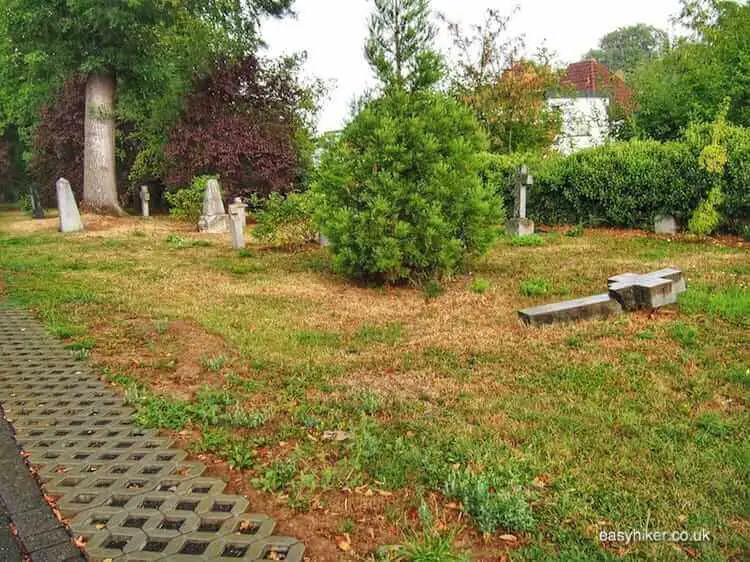
… to the Goethe Well on the corner with Haarbachstrasse.
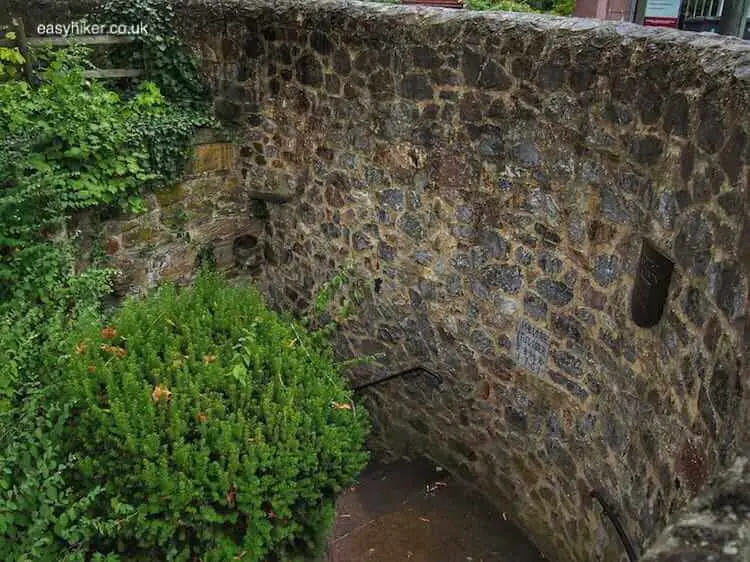
The well, like many of the novel’s sites in and around Wetzlar, is exhaustively described in the novel. At the time, the well – now dry – was one of the town’s main watering holes and always busy with people. Young Werther liked to sit here and just observe the people fetching water.
The site was also much more idyllic at the time, “of heavenly beauty” says Werther, located near a foot path at the edge of a forest. The stairway leading down to the actual source, meanwhile, appears not to have changed all that much: Werther describes it as “a bit eerie”.
Follow the trail into Wahlheimer Weg and turn left towards the Hauserberg. Werther who takes many walks in the area enthuses about the views along the way – which, in all fairness, must have changed considerably over the past 250 years.
The landscape here is pretty, no doubt, but hardly of a sublime, rapture-inducing beauty. (Some quotes from the novel – in German – are displayed on panels along the way.)
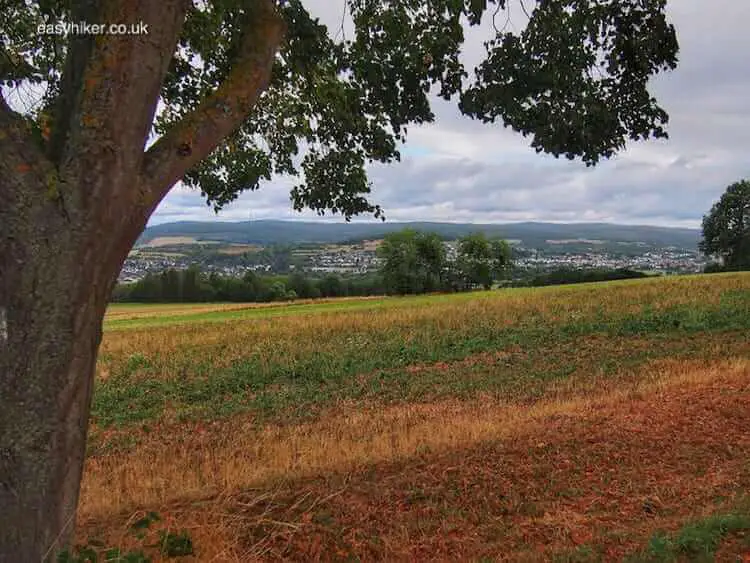
This section of the Goethe Trail is also part of the Lahnweg, the region’s long-distance hiking trail.
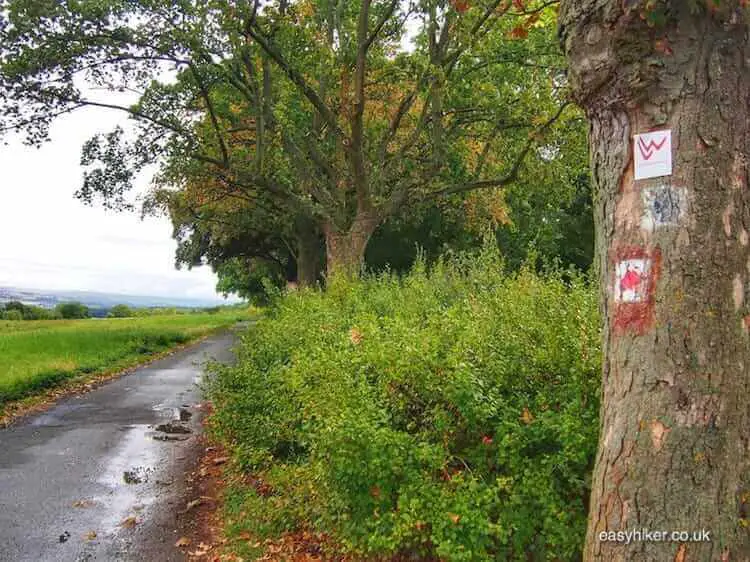
You will also find a Stamping Station here – which means that, if you have brought your Lahnweg Hiking Book, you can use the stamp that is provided behind the flap to mark your book accordingly (oh, Germany!)
Strictly speaking, of course, that would constitute a Hiking Fraud since you have not completed the entire stage in question. But go on: we won’t tell anyone.
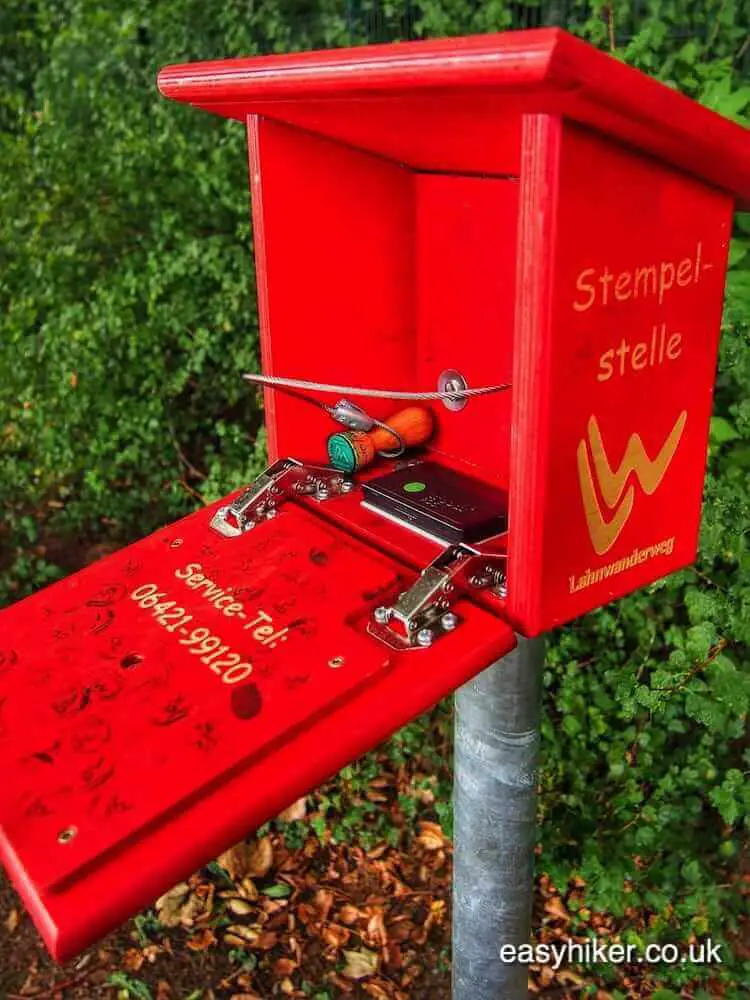
Now we are only a short walk away from the descent into Garbenheim, called Wahlheim in the novel. This is where Young Werther rents a flat because he likes it better here than in Wetzlar.
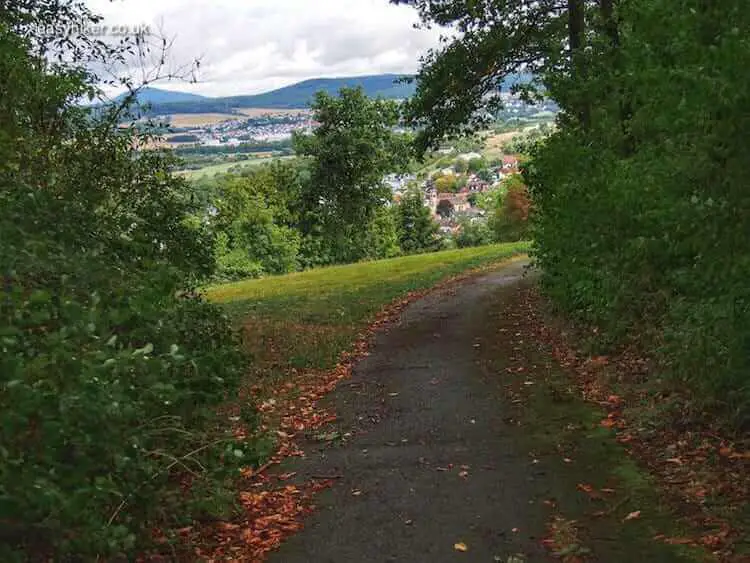
Goethe came often to Garbenheim: an aunt of his lived in the village, and – more to the point, perhaps – he loved to accompany Lotte on her visits (she also had a relative near-by). Together, they used to sit in an inn by the church and drank coffee in the garden. (The inn is described in the novel.)
Near the church (on Goetheplatz), you will also find the Goethe statue …
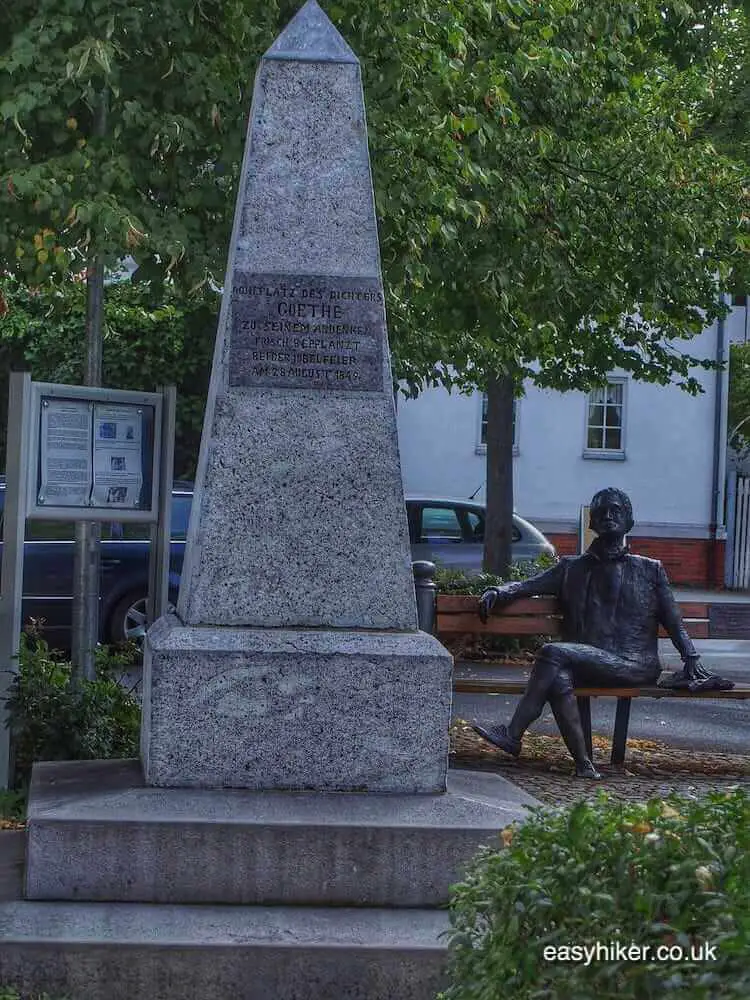
… and, around the corner on the busy main road, the bus stop for your trip back to Wetzlar.
This easy hike along the Goethe Trail from Wetzlar to Garbenheim will take you approx. 2 hours. For more information (in German) and a map, please go here.



